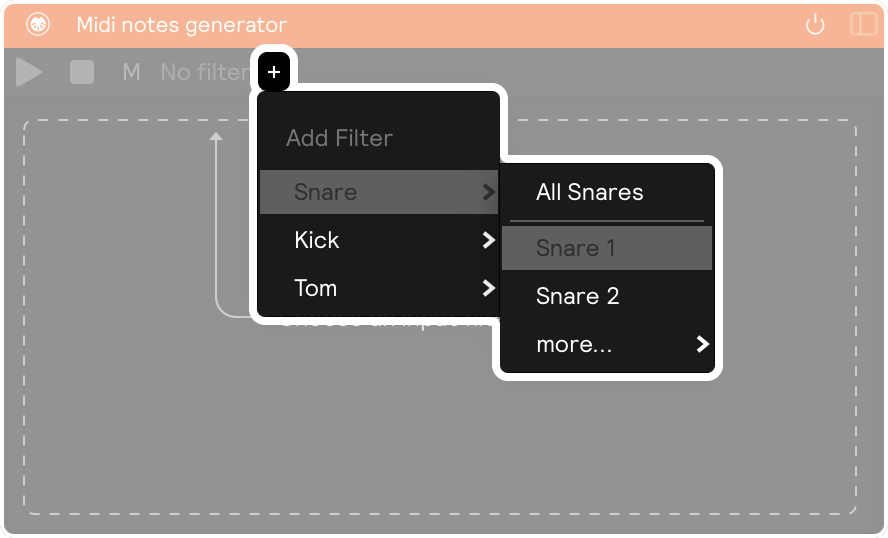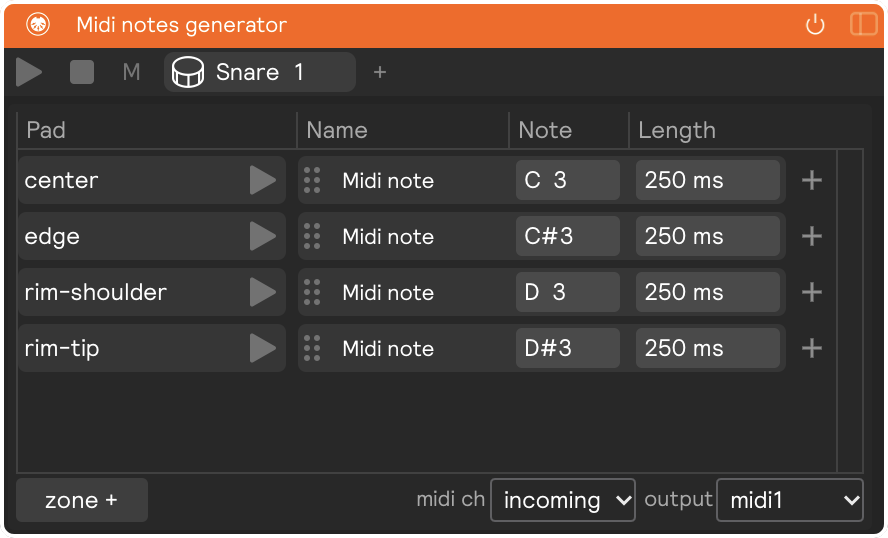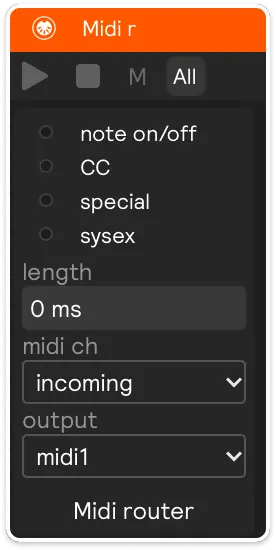MIDI Output
You can organize MIDI output of Sensory Percussion using the MIDI notes generator, MIDI CCs generator, and MIDI router.
To use the different MIDI generators, you must have MIDI outputs added to your Hardware Outputs, one for each MIDI channel you want to send out of Sensory Percussion V2.

Then drag either the MIDI notes generator or the MIDI CCs generator into your set and then select the corresponding output from the dropdown.
Each of the three generator types include midi channel and output options.
The midi channel option allows you to select the MIDI channel that the generator will send note messages on. However, if the Midi Channel is set to anything besides "incoming" on the Hardware Midi Output, that will take precendence. If both the Generator and Hardware Ouput are set to "incoming" the default MIDI channel is 1.
The output option allows you to select the MIDI Hardware Output that the generator will send note messages to.
MIDI Notes Generator
To get started with the MIDI notes generator, select an input filter from the dropdown. This will determine which pad zones are available to send MIDI notes.

Once you've selected a filter, you can choose the note values, set names for each note, and set the note length. Each pad can have multiple notes, which can be added with the + button.

MIDI CCs Generator
The CC generator allows you to send MIDI control change messages from Sensory Percussion to a MIDI hardware output. This is done by making assignments on each CC knob, which will then transmit the assigned CC message to the selected MIDI hardware output.

MIDI Router
The Midi Router sends Pitch & Scale and Note Controller messages to a MIDI hardware output. This is a somewhat niche, but pretty useful, tool, in that it allows you to sequence notes or send scales out to anything that accepts MIDI. For example, if you wanted to send a C Major Triad arpeggio out a MIDI hardware output, you would:
Create a sequencer, and for step 1 place a MIDI Router with its transpose knob in the default 0 (or C3) position; for step 2 copy/paste or create another Midi Router and set its transpose knob to 4 (or E3); and for step 3 copy/paste or create another Midi Router and set its transpose knob to 7 (or G3).
You can also drag/drop any modulator onto the Note Control parameter of the Midi router's Pitch & Scale panel.
The length parameter allows you to set (or control) the note duration that will be sent to the MIDI Hardware Output. It will be clamped if it exceeds the Max note length set by the Hardware Output itself.
